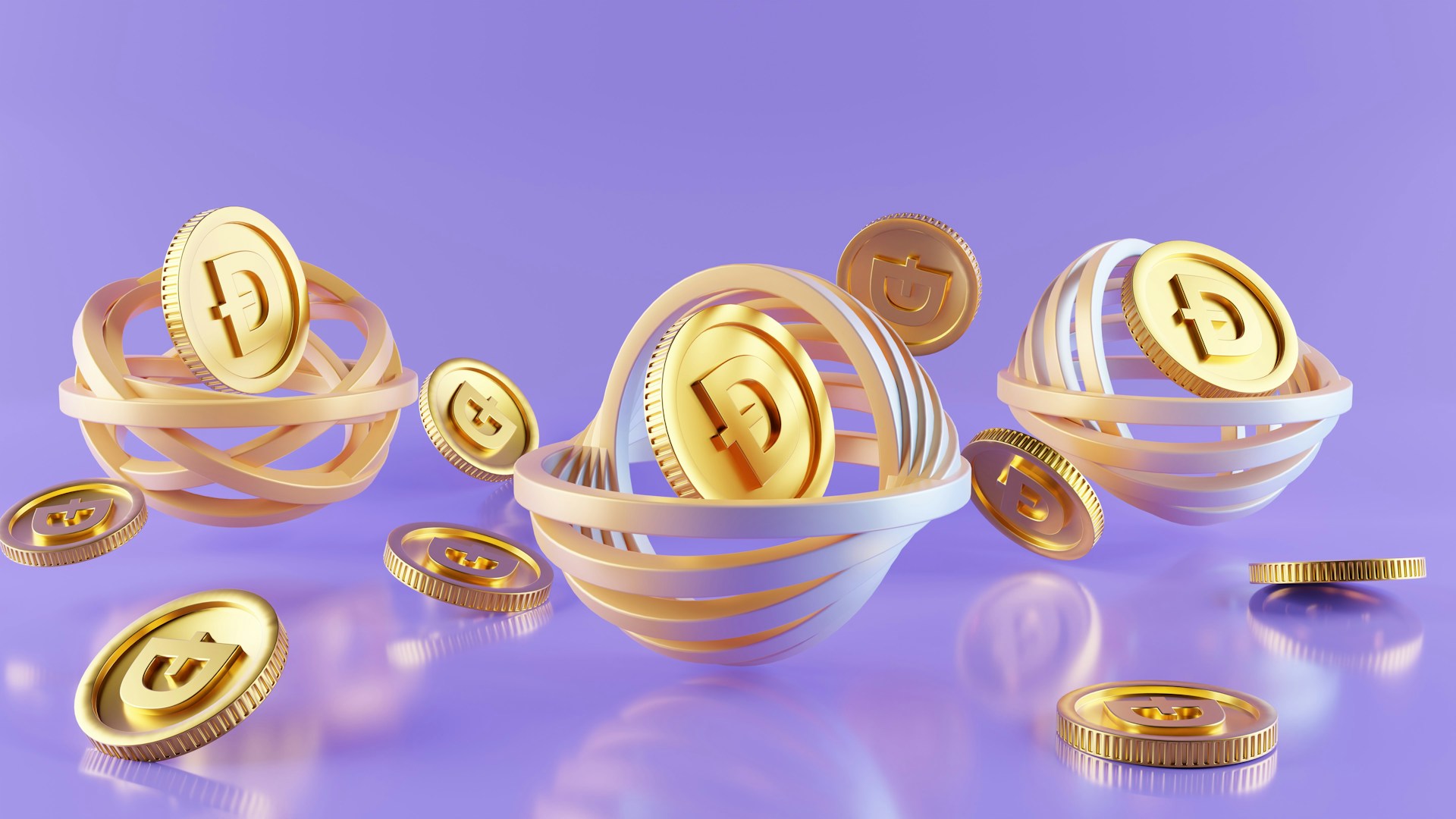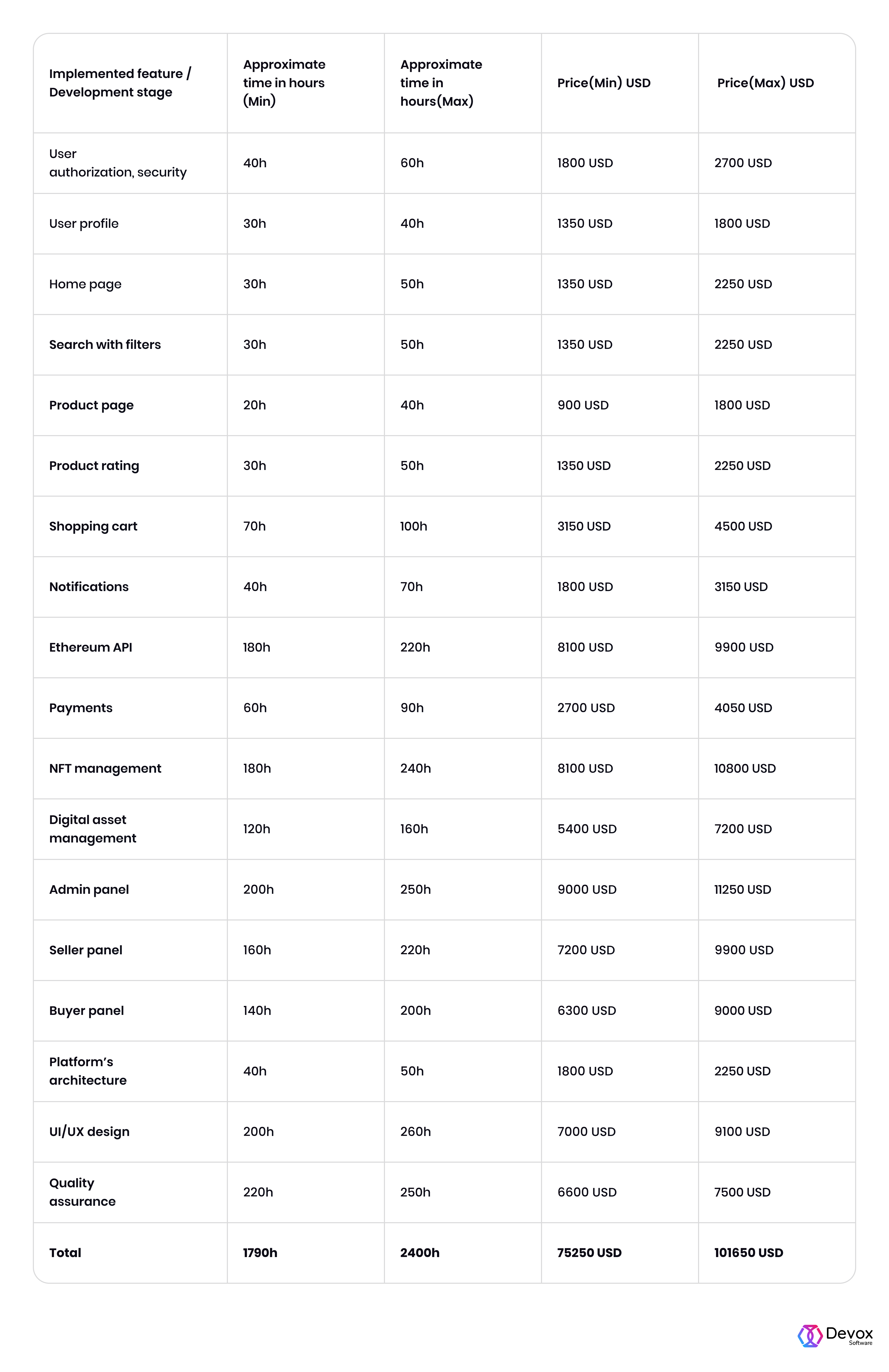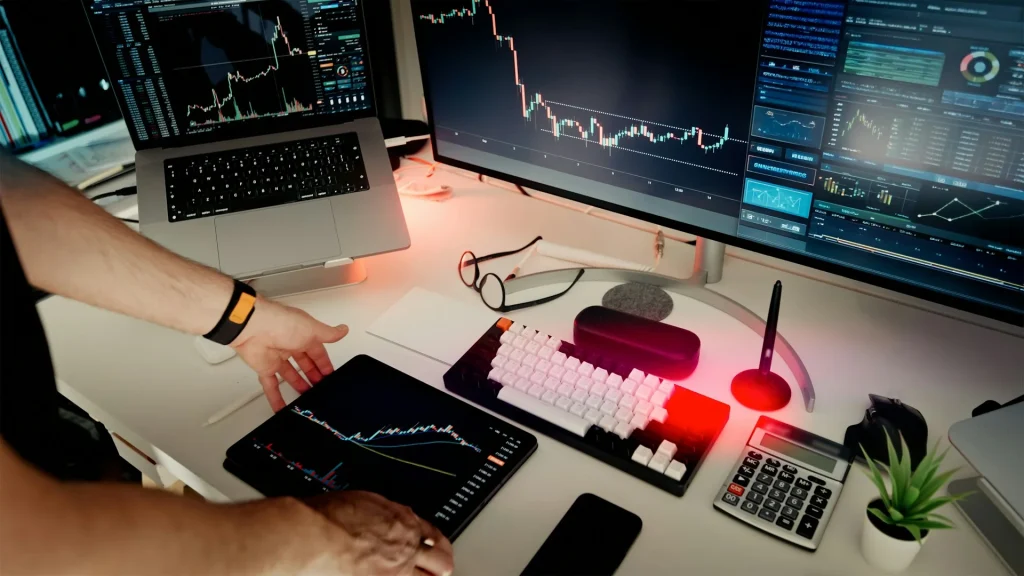Table of content
Why? Well, since the first non-fungible token emerged in 2014, NFTs have become one of the hottest digital trends. So, not surprisingly, the marketplaces where people can interact with the tokens, trade them, and collect their favorites, are becoming mainstream.
Famous NFT platforms like OpenSea and SuperRare are just pioneers in the promising market. According to a Financial Times report, almost 30 million wallets were trading NFTs in 2021, and their number keeps growing. Moreover, the total NFT sales volume has reached nearly $25 billion!
But how to create an NFT marketplace that will withstand stiff competition and make your business succeed?
We can share helpful insights thanks to Devox Software’s rich experience in web application development, including blockchain-based marketplace solutions. In particular, this post covers NFT platform development stages, specifics, features, and benefits for your business.
What is an NFT Marketplace and How Does It Work?
NFT (Non-fungible token) is a digital asset allowing people to own unique virtual items or pieces of content, such as images, videos, artworks, photos, tweets, audio files, etc. Such a token is based on the Ethereum or Cardano Blockchain technology, also used for traditional cryptocurrencies like Bitcoin, Ethereum, and Tether.
In the last few years, due to significant growth of interest in NFT and Blockchain-based solutions, many businesses have focused on creating NFT marketplaces. So what is the NFT market, and how does it work?
An NFT marketplace is a platform allowing people to store and trade NFTs or display their collectibles. Such platforms enable users to buy or sell digital assets using their online wallets, often with cryptocurrencies. At the same time, NFT marketplaces can serve more cognitive objectives, allowing people to keep up with the latest market trends and explore the NFT ecosystem.
There are two most common NFT marketplaces:
- General marketplaces. Such NFT platforms are the most common and popular since they contain all possible kinds of NFTs.
- Niche marketplaces. These platforms focus on selling NFTs related to a specific niche or segment.
The principles of smart contracts enable the functioning of an NFT marketplace. This secure protocol allows users to perform transactions regulated by the blockchain. Thanks to this technology, a seller and a buyer can make fast and safe peer-to-peer agreements where the purchases are approved or rejected automatically. Such an approach helps prevent potential fraud and significantly facilitates transactions.
Examples of Popular NFT Marketplaces
The skyrocketing growth of NFTs boggles the imagination. According to a Globenewswire report, the global Non-fungible token market size is expected to reach nearly $7,400 million by 2028, compared to $1,500 in 2021, with a CAGR of almost 25%. Hence, many new players will likely emerge in the years to come, making the competition even stiffer.
Today, several NFT marketplaces are the most well-known and trusted by millions of customers worldwide. Let’s look at those trending and successful NFT websites in more detail.
OpenSea
OpenSea is like Amazon or eBay in the world of NFTs. It’s the first, largest, and most popular NFT marketplace, with more than 120 million website visits per month. On this platform, users can find all types of NFTs, including images, artworks, videos, and more. Today, OpenSea offers more than 80 million NFTs and nearly 20 million collections.
Nifty Gateway
This marketplace is famous due to its digital art auctions that managed to sell some of the most expensive NFTs so far. In particular, The Merge was sold for $91.8 million in 2021. Also, several successful digital artists, including Beeple and Cryptokitties, are selling their works on Nifty Gateway.
Rarible
Rarible is another excellent example of a world-famous NFT marketplace where users can buy, sell, and create digital assets. On top of that, Rarible has its crypto token called RARI coin, which provides community members with more opportunities when using the platform.
SuperRare
SuperRare is one of the most famous examples of NFT platforms focused on a specific niche. Most assets you can find there are unique digital artworks. These are single-addition NFTs created by a limited group of famous NFT artists. In some way, SuperRare connects the world of digital assets with more traditional types of modern art.
Why Create Your Own NFT Marketplace?
So is it a good idea for your business to start an NFT marketplace? Let’s look at the most compelling benefits of NFT platforms.
- Generate ROI. The businesses running NFT platforms have a great chance to offer unique collections and generate revenues that cover the investment entirely.
- Access a wider audience. NFTs are likely to be interesting for a broad audience as they aren’t limited solely to business or financial purposes.
- Provide blockchain-based security. NFT marketplaces are based on the Ethereum blockchain architecture, which involves top-notch security standards ad technologies.
- Benefit from decentralization. NFT platforms allow for decentralized, peer-to-peer transactions without third-party involvement. It helps users trade anonymously and avoid centralized control over their activities.
The Core Features of an NFT Marketplace
The number and complexity of features implemented in your NFT marketplace depend on your project specifics. However, there are certain standard functions every NFT platform needs to be competitive and cover the users’ needs.
Here are the essential NFT marketplace features and their specifics.
- User authorization should be simple yet reliable so that customers can quickly and securely register or enter their accounts.
- User profile contains basic information about a community member.
- Storefront is the main NFT platform section resembling a dashboard. With its help, visitors can instantly access information about sellers, bids, offers, rates, price history, etc.
- Search with filters enables users to find the desired token and facilitates their search by picking suitable categories.
- Listings feature helps create lists of NFTs users like or wish to buy in the future. This function should allow for naming, specifying, and changing collections.
- Buying and participating in auctions are the core functions allowing customers to buy NFTs immediately or make bids in auctions. It’s worth enabling them to choose the expiration date, monitor bids’ statuses, and make new bids.
- Ratings add value to the tokens and help newcomers better understand their specifics.
- A wallet allow users to make transactions using crypto or fiat currencies. Also, the customers can store their NFTs and digital assets within the platform.
- Notifications instantly inform users about new bets, status changes, messages, and other platform updates.
- Support system enables your community members to ask questions and find solutions to their problems. It can be a live chat, email support, and a FAQ section.
- Admin panel is an internal function allowing your platform’s administrators to streamline management, control the system’s performance, and get valuable insights.
Key Stages of NFT Marketplace Development
If you need to create own NFT-based blockchain, it’s worth looking closer at such a platform’s development lifecycle. Here are the most critical NFT development stages, their specifics, and helpful tips based on DevoxSoftware insights.
Analysis of Business Requirements
First and foremost, define your NFT platform’s niche. As mentioned above, NFT marketplaces may serve various goals. Some are universal, while others focus on a specific market segment. So it’s essential to determine your target users and understand their basic needs. Also, you may have to dive deeper into the market’s specifics and investigate your competitors. Next, the hired development team will next study project requirements and build the initial roadmap.
Discovery Phase
At this stage, your tech partner will be able to come up with a more accurate development strategy. In particular, they will specify the following details:
- Monetization approach
- Blockchain architecture type
- Preferred token protocol
- Essential and nice-to-have features
- Tech stack, etc.
The discovery phase helps all the stakeholders be on the same page throughout the development lifecycle and prioritize the project’s core objectives.
Tech Stack Choice
Choosing the technology for your NFT marketplace is a crucial step in defining your project’s future. The programming languages, frameworks, and tools should be reliable, blockchain-friendly, and relevant to your planned features.
Here are the most widespread technologies to consider when building an NFT platform.
- Front-end: React.js, Vue.js or Angular
- Back-end: Express.js, Node.js
- Database: MongoDB, MS SQL, PostgreSQL
- Cloud hosting: AWS, Azure, Google Cloud
- Smart contract deployment: Solidity, Drizzle, Truffle, Ganache
If you need expert advice on choosing the right technologies for your NFT platform, Devox specialists can provide you with a more comprehensive consultation.
UI/UX Design
Most NFT marketplaces are supposed to serve a broad user audience, so they should be simple and intuitive. Thus, it’s worth paying extra attention to a well-thought-out user experience. In particular, these are a consistent layout structure, streamlined navigation, and an appealing interface. Following Design Thinking Principles in the creation of the UX/UI design works in the best way here.
NFT Platform Development
The development process consists of two core aspects: client-side (front-end) and server-side (back-end).
- Front-end development. This stage is responsible for effective and smooth user-platform interactions. Front-end developers implement UI/UX solutions and create your NFT platform’s interface.
- Back-end development. At this stage, software development engineers build the internal part of your platform. These are the essential functions related to business logic, security, data storage, blockchain, smart contracts, token standard, DevOps, etc.
Quality Assurance
QA specialists should carefully test the platform’s functionality, internal structure, and other tech aspects of your NFT marketplace project. You will be aware of your platform’s potential bugs, risks, and vulnerabilities thanks to multiple automation and manual checks. It’s particularly critical for the security system since your marketplace will deal with the users’ private data, keep their crypto wallets, and run multiple transactions.
NFT Marketplace Launch
Finally, it’s time to launch NFT marketplace. However, the release is not the final destination. You will need to keep working with your tech partners to ensure ongoing support and maintenance of your NFT platform. The thing is that after your end-users feedback, you will need to constantly control your platform’s performance and improve it when necessary.
NFT Marketplace Development Cost
NFT development is a complex and multilevel process. It requires the involvement of many tech specialists, from UI/UX designers and business analysts to software engineers, QAs, and blockchain experts. So how much will it cost you, and is building NFT platform a worthy investment?
Well, the cost of such a project depends on numerous factors, including its scope, complexity, and features. Furthermore, the hired vendor’s location also affects the price. That’s because outsourcing solutions are usually much more cost-effective than in-house ones. At the same time, the development cost varies in different regions.
Let’s look at the approximate price and timeline of your NFT marketplace development project.
To conclude, the approximate price of an NFT marketplace MVP containing only basic features may vary between 75250 USD and 101650 USD. Meanwhile, a full-fledged custom product development with more advanced functionality (additional APIs, complex backend, admin panel, chat, etc.) will cost you up to 225250 USD. For a more detailed and accurate cost estimation tailored to your project requirements, you can reach out to the Devox team.
Build an Outstanding NFT Marketplace with Devox
Building an NFT marketplace can significantly benefit your business. However, such a project requires a meticulous approach to the development process, so it’s worth hiring a team with sufficient expertise in creating powerful, carefully structured, and feature-rich solutions. An NTF marketplace has to ensure top-grade blockchain security and comply with design best practices such as intuitiveness, straightforward navigation, and interface simplicity.
If you’re looking for a trustworthy tech partner to create NFT based blockchain infrastructure, we at DevoxSoftware have the required knowledge and skills to help you out. Our experienced team provides various services, including full-cycle web app development, UI/UX design, quality assurance, mobile development, and DevOps consulting. We are experts in multiple technologies, including those necessary for blockchain-based platforms.
Get in touch, share your ambitious ideas, and we will come up with solutions tailored to your individual requirements
















